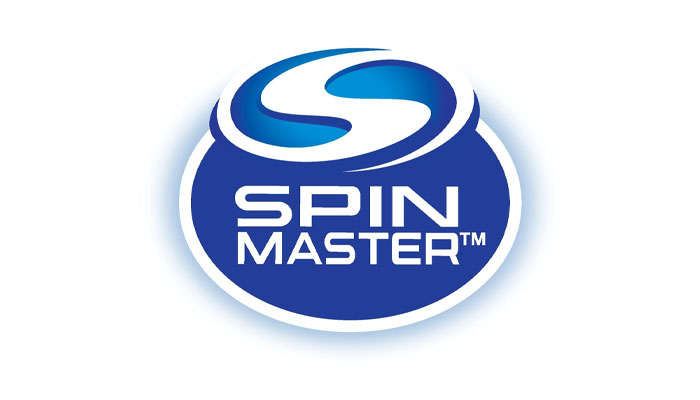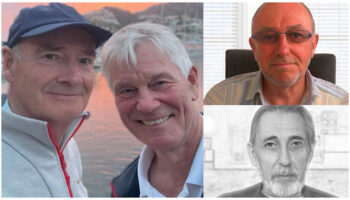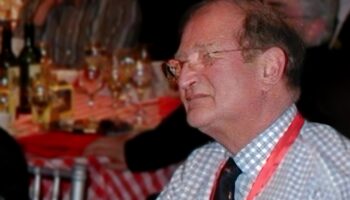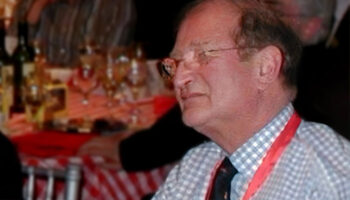“If it weren’t for inventors, we wouldn’t be here today”: Spin Master co-founder Ben Varadi on how inventors shaped the toy titan

Ben, it’s great to catch up. Thanks for taking the time. To kick us off, at what point in Spin Master’s history did the company develop an appetite to work with the inventor community?
As soon as I learned that it existed! The thing about Spin Master is that we didn’t necessarily have a plan to be a toy company. At the time, the three of us were really learning; we were doing everything… I was flipping through the back of an industry magazine and on the very last page was a sort of a classified section, and it had the names of these inventors… I said “Wow, that’s so cool!” I didn’t really know that world existed.
I called them and that’s how I learned about it. And my first meeting, I believe was with a man named Howard in the toy building in New York at 200 5th Avenue. I have to say, I don’t think he’d been in his office for years because when I met with him, he spent like 15 minutes looking for the key! He had a huge amount of keys on this giant ring, and he tried every one of them.
Haha!
Anyway, that was my first inventor meeting and it was magical. It was one of the most pivotal moments of my life. It was such a beautiful moment to find out that there were people that do this for a living; putting ideas together with spit and gum… From that moment, I knew I was hooked.
After that a lot of people helped us, like Richard Albert from Canada Games. He gave us a whole bunch of names of inventors to call, as did Bryan Irwin from Irwin Toy. I got a lot of help from people in the Canadian toy industry.

Can you recall the first inventor item that Spin Master signed?
I think the very first item we ever signed was a kite from an inventor called Bill Tyrrell. Mike Goldman was representing him. It was such an important moment for us. I genuinely think that if it weren’t for inventors, Spin Master wouldn’t be here today. They played such an important role and still play an important role. Think back to Bakugan… Hatchimals was a homegrown idea but we worked with outside inventors to bring it to life… Even the purchase of Rubik’s Cube – that’s obviously an invention. So it’s really a very important part – and continues to be an important part – of Spin Master’s history.
Amazing. And what would you say was Spin Master’s first big inventor success story?
Air Hogs was a huge one. That came from Dixon Manning – two British inventors; John Dixon and Peter Manning. The original Air Hogs Sky Shark changed the course of Spin Master.
Why did you license it? What made it special?
Well, it’s funny because they showed it to us when we were sharing a showroom with five other companies! We were in the back corner, and then tucked behind us was a space that felt a bit like a galley kitchen – and there was one guy in there… I’d love to say we had the worst spot in the place but he had us beat!
Ronnen said to me: “You should go meet with these guys, they came in to see you.” So I met them and they showed me the plane. I say plane… It was a giant Schweppes Ginger Ale bottle with wings made from a fish and chips container. And then a giant bicycle pump. There was also this little pneumatic motor on the end of it. And they didn’t fly it – they pumped it up and spun it around. We were in the showroom so they couldn’t fly it. They said: “I know it sounds unbelievable, but it flies.” And it really did fly – I remember being blown away by it when it saw that.
So it was an immediate “yes”?
Well, they sent it in and I had this epiphany to pass on it because I was very worried that kids would lose it. I thought that would cause a lot of problems for us after they spent 30 bucks on it. That’s when one of the first great rules of toys hit me: the great news is if they have a great experience and they lose it, they’ll buy another one. So I changed my mind at that point!
The other thing that helped convince me was flying it. I was flying it at the park – this was 1996. I was 26 years old and we didn’t know anything about toys other than selling little novelty items. I was flying it at the park and this kid comes over to me and he says: “Where’d you get that?” I said: “I got it at Toys R Us.” He pauses, looks at me and says: “You didn’t get it at Toys R Us… That’s a toy of the future!” I figured, if that’s not a sign, what is! I went back to my partners and they bought into it too.

Amazing. Did it need much tweaking to go from Schweppes bottle to Air Hogs?
Yes – so the next section of the story also involves two inventors. I went to Steve Rehkemper from Chicago. We were doing a lot of stuff with them and I asked Steve “What do you think of this? Could you help us develop it?” He agreed. Then another inventor, an engineer from Pennsylvania called Chuck Kownacki, also jumped on to help us. They all did different parts of the puzzle.
I remember when I told Steve about it, he said to me: “Oh, it’s the one you pump up with the bicycle pump and it flies?” I said: “Yeah, how do you know?” He said: “Everybody’s tried to do that item… Galoob had it. Hasbro had it, Playmates had it…” I was like: “What?!” And then it dawned on me, of course, they had tried these other companies first! Why would they have brought it to us first? We were nobody! That was another lesson – I thought ‘Aren’t we smart?’ when we were actually last in line!
Haha! The guy in the galley kitchen might’ve been next on the list if you’d turned it down!
Haha! Exactly – at least we beat him to it! Anyway, that item put us on the map because it changed the toy industry. It changed what a great toy should do.
How so?
Let’s be frank – there’s a lot of stuff out there, right? We’ve all made it, we’ve all sold it and we’ve all developed it. It’s why I’m very proud of that toy because Air Hogs made flight available to kids. It put the magic of flight in the hands of a young child. It felt like magic because there were no batteries, no gas and no difficult assembly. You just pumped it up and it worked like magic. It democratised flight for kids. I’m so proud of that. People ask me all the time ‘What’s the greatest toy that you guys ever made?’ I always say Air Hogs because of what it did, right? It did what we all dream of. I’m very proud of that toy.

You mentioned that it was a rough and ready prototype when you first saw it. How important is that ability to squint and see where an idea could go when it comes to working with inventors?
It’s vital. I’m amazed when an inventor puts a product on the table and people immediately bring up a safety issue, or a cost issue, or competitive issues… You’ve got to put all of that out of your mind. The only question that matters is: Does it get you excited? Do you, in that moment, feel that little pang of excitement? Before you go to all the reasons why it won’t work, focus on that moment, because it’s magical. That’s the essence of spotting something great.
Developing a toy is a very fragile process because there’re always more reasons not to do something than to do something. The odds are stacked against the product – and the inventor – right from the start. If 100 things go on the table, five might be successful, a couple might be great and one – or maybe not even one – could be a blockbuster.
But you’ve got to try to find the ‘yes’ reasons before the ‘no’ reasons.
Spin Master has a great reputation with inventors. How have you cultivated that approach within the company over the years?
Well, the first thing to say is that it’s very hard to do, even today. Guys like Rich Mazel and Dougal Grimes are awesome, but it’s not just them, right? It has to flow through the whole organisation and as the organisation gets bigger, it becomes harder to maintain that.
I’ve always taken a long-term view with the inventors and we still work with the inventors we met 25 years ago.
We’re also very fair and reasonable. It’s important to recognise that, most of the time, you’re a company and the inventor is an individual, so you’re in the position of power. We have to look at what we can do to help, right? What can we do that’s fair? Even if we sometimes feel it isn’t really that fair on us, we do it anyway because we believe in the relationship. The fact that you’re asking this question is very meaningful to me because it means our reputation is still intact. That’s very important to me because the inventor relationships are the highlight of my career.
I wanted to also touch on working with new inventors and your Toy Inventor Programmes in Israel, Canada, London and Japan. Why is it important for Spin to take the lead on bringing new inventors into the industry?
The simple answer is that they are the future. To ensure a strong toy industry in the future, you need inventors. They are the cornerstone of it because they come up with so many of the amazing ideas that drive the industry. If you go back in the history of toys, to Marvin Glass and Eddy Goldfarb, some of the greatest toys ever made come from inventors. I don’t see why you wouldn’t support young people coming up.
The problem is that it’s just getting so much harder for them because there’s fewer toy companies and fewer retailers. It breaks my heart. I don’t think it’s better for the world and I don’t think it’s better for the toy industry, but that’s just the way it is. I can’t change that.
You mentioned Rich and Dougal earlier. What makes someone good at inventor relations?
Being able to promote the values of the company. It’s really important that those guys buy into our values and take them on as their own with regards to how they treat inventors. They also have to be able to push and fight and create an argument as to why we should be doing something.
When we bring someone on for inventor relations, we go and talk to the inventors first. In a way, Rich and Dougal were hired by the inventors! We ask questions like do you like these guys? Do you respect these guys? How have they been in handling issues or getting you information? Do they get back to you in a timely way? All of that stuff. We want the best guys and hopefully the best guys feel they’re coming to the best company that’ll support them and believes in inventors.

On needing IR execs that will fight for an idea, what does that look like? Passionate reasoning? Pounding the table?
I would say Rich Mazel is not a pound-the-table kind of guy! And for the record, neither is Dougal!
Shame!
I’m a pound-the-table guy, but they can do it in ways that are cleverer than that. They can be quite artful. They can move around and find the motive. I go to around 75% of the inventor meetings too and I can help push things through. And I always tell inventors that there’s no politics here. You can call me directly if you feel we’re making a mistake.
We’ve covered some of Spin’s big hits, but what would you say is your most underrated toy?
That’s a really good question. I’d say our Upriser Ducati RC Stunt Bike. It could literally stand still and support itself. It’s a masterpiece of engineering – and it didn’t do very well. That said, I’m so glad we made it because sometimes you just need to make great things, you know? And we could afford to do it. We can afford to make mistakes luckily, and hopefully we’ll be able to continue to make mistakes in the future. I’m still so proud of that toy and of the engineering team.
It’s like you’re playing a high stakes game and you’re convincing the company that we should do this. And the company is investing millions of dollars in it, so you better be comfortable with that feeling of being wrong. And the more complicated, the more magical, the higher the risk.

When a product like that doesn’t do well, is it tough to convince people to stay in that lane? I’d imagine it’s tempting to think ‘Right, we’re not going near that kind of item for a while.’
As a company gets bigger, it’s harder for me to get those types of items in. And not just me – anybody! Because in fairness, a lot of those types of items have failed. And when they fail, they’re big failures. We’re hopefully a little smarter at saying, “What’s the upside? What’s the downside?”
And the industry’s changed; it’s a lot harder now. In the old days, there were four or five promotional dolls a year. There were three or four promotional RCs a year. All of that’s gone; now there’s a lot. And it’s so much harder to reach kids. And there’s way fewer retailers. It’s also really hard to make great toys in this day and age because of cost. We’re limited due to cost. If an action figure could be 20 bucks, we wouldn’t have to compromise. When your action figure needs to be $10 or $6, we’re compromising something, be it packaging or features.
Right…
There’s been massive inflation – except in the toy industry. In 1979, a birthday present was how much? 10 to 20 bucks. Today a birthday present is probably 20 to 30 bucks, so it’s barely changed and that’s come at the expense of the product. When parents say the toys are so cheap today, I say, “It’s not the toys that are cheap – you’re cheap!” Believe me, we would rather sell you a $30 action figure because it’d be way better! That said, I still think we’re doing an unbelievable job. We’re very focused on quality and we try to ring every nickel out of a toy to make the quality good, but it’s a challenge.

Before I let you go, you’re a former IDIOT Award winner…
Yes, I love the IDIOT Awards! I love England, I love the British inventors. Listen, there’s three primary places in the world where inventions happen – the United States, England and Israel. The Inventors Dinner is fantastic; you guys always pick great venues. It’s amazing.
I wish I could take the credit! How did it feel to win the award?
I’ll be honest, awards are always tricky because I feel like if I’m getting an award, they must be running outta people! The second thing is I’m always inclined to believe that there’s a little bit of politics in giving an award. And thirdly, when I go up and accept an award, I feel embarrassed because there’s so many other people that are doing a lot of the legwork.
That said, I think the toy industry is better than a lot of other industries when it comes to giving awards. And when you get called up, it’s very special and it’s a big honour because they chose you. And when we were starting out, we didn’t even think we’d be in business in a year!
Ben, this has been great. A huge thanks for speaking with us. I have one last question: What helps fuel your creativity?
What gets me excited are the other people in the room. I love it when we’re all in there brainstorming, having a product meeting and trying to make something great. Also, the pressure! That probably sparks a bit of creativity too. I gotta come up with something because we gotta keep the lights on, you know? There’s always a bit of that in me – you never lose that feeling. You’re always slightly driven by fear.
Then there’s my competitive spirit that wants to win. I want us to commit to amazing stuff and have people say “Wow, that’s really cool”. That’s amazing. And uh, and I want to put points on the scoreboard, you know, by seeing amazing ideas come to life and see them in the hands of kids, right? Seeing things sell is a real testament to the idea. Amazing things can come out that don’t sell, but seeing something sell is a testament to the fact that people like what you’ve done.
Ben, I can’t thank you enough. Let’s tie-in again soon.
You’re so welcome. I guarantee it was as meaningful for me, maybe more so, than it was for you because I really appreciate the chance to talk about inventors; they deserve the recognition.
–
To stay in the loop with the latest news, interviews and features from the world of toy and game design, sign up to our weekly newsletter here

























